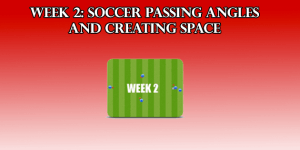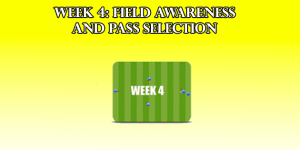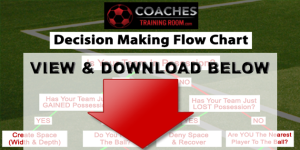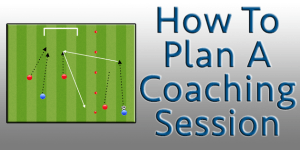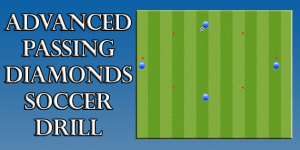Soccer Penalty shootouts come into effect when the game is tied at the end of 90 minutes or extra time.
To start off each coach chooses five penalty takers.
Each coach has his or her own theory of the best order for their penalty takers to play.
Some have their best penalty shot takers go last when the pressure is greatest.
Others prefer to send their best penalty shot takers in first to put pressure on the other team.
During a shoot-out, coaches, players other than the kicker and the goalkeepers must remain in the center circle. The kicking team’s goalkeeper stands at the intersection of the goal line and the penalty area (18-yard) line near one of the assistant referees. Goals scored during the shoot-out are not included in the final score, nor are they added to the goalscoring records of the players involved.
The following is a summary of the procedure for kicks from the penalty mark. The procedure is specified in FIFA’s booklet Laws of the Game
- The team to take the first kick will be decided by a coin toss and the referee will choose the goal at which the kicks will be taken.
- All kicks will be taken at one goal to ensure that both teams’ kick-takers and goalkeepers face the same pitch irregularities (if any), wind and sun conditions, etc.
- All players other than the kicker and the goalkeepers must remain in the pitch’s centre circle.
- Each kick will be taken in the general manner of a penalty kick. Each kick will be taken from the penalty mark, which is 12 yards from the goal line and equidistant from each touch line, with the goal defended only by the opposing goalkeeper. The goalkeeper must remain between the goal posts on his goal line until the ball has been kicked, although he can jump in place, wave his arms, move side to side along the goal line or otherwise try to distract the shooter.
- Each kicker can kick the ball only once per attempt. Once kicked, the kicker may not play the ball again.
- If the ball rebounds off the goalkeeper or the goal frame, the kick will be failed.
- No other player on either team, other than the designated kicker and goalkeeper, may touch the ball.
- A kick will be successful if, having been touched once by the kicker, the ball crosses the goal line between the goal posts and under the crossbar, without touching any player, official, or outside agent other than the defending goalkeeper. The ball may touch the goalkeeper, goal posts, or crossbar any number of times before going into the goal as long as the referee believes the ball’s motion is the result of the initial kick.
- Teams must take turns to kick from the penalty mark in an attempt to put the ball into the net, until each has taken five kicks. However, if one side has scored more successful kicks than the other could possibly reach with all of its remaining kicks, the shoot-out will end regardless of the number of kicks remaining; this basis is called “best of five kicks”.
CLICK TO VIEW OUR SESSION PACKAGES
- If at the end of these five rounds of kicks the teams have scored an equal number of successful kicks, extra rounds of one kick each will be used until the tie is broken; this is known as sudden death.
- The team that scores the most successful kicks at the end of the shoot-out will be the winner of the match.
- Only players who were on the pitch at the end of play will be allowed to participate in the shoot-out.
- A team may replace a goalkeeper who becomes injured during the shoot-out with a substitute, provided the team has not already used the maximum number of substitutes allowed by the competition.
- If a goalkeeper is sent off during the shoot-out, another player who finished the game must act as goalkeeper.
- If a player, other than the goalkeeper, becomes injured or is sent off during the shoot-out, then the shoot-out will continue with no substitution allowed.
- Any player remaining on the pitch may act as goalkeeper, and it will not required that the same player act as goalkeeper throughout the shoot-out.
- No player will be allowed to take any extra kicks from the penalty mark until all other eligible players have taken a first kick, including the goalkeeper.
- If it becomes necessary for players to take an extra kick (because the score has remained equal after all eligible players have taken their first kick), teams will not be required to follow the same order of kickers as was used for the first kick.
- If at the beginning of kicks from the penalty mark one side has more players on the pitch than the other, then the side with more players must select an appropriate number of players who will not take part. For example, if Team A has 11 players but Team B only has 10, then Team A will choose one player who will not take part. Players deselected cannot play any part in the procedure: so a goalkeeper cannot be deselected from kicking while retained for saving. This applies whether players are absent through injury or being sent off. The rule was introduced by the International Football Association Board in February 2000 because previously an eleventh kick would be taken by the eleventh (i.e. weakest) player of a full-strength team and the first (i.e. strongest) player of a sub-strength team. However, if a player is injured or sent off during the shoot-out, the same principle will not apply and the referee will not reduce the number of players on the opposing team.
It is important to practice taking soccer penalty shots during practice because more and more games are being decided by soccer penalty shootouts.
(Resource: Wikipedia)



